#joseph in part 2 is. MARGINALLY better than most of the part 1 cast
Text
i love reading things set in countries that i'm knowledgeable and/or have been to because i can point out really minor errors in fanfiction. i think the average american does not know that in england (and apparently some of asia! which i only just found out) there are switches on power outlets so you can just turn it off instead of unplugging it. like 9 times out of 10 that won't come up but on the off chance it does i'm like ohoho. this clown has never been to england...! my favorite part though is watching americans (specifically americans because i swear to god people who speak english as a second language and/or are from any other country have some idea of what it's like to have an accent / personally know people who have accents? idk) try to write british accents like it is REALLY funny. i literally only lived their for five years and i never picked up a full accent myself (certain words and tones i did but they're mostly gone after living in the states again for a few years) but between living there and having a ridiculous amount of family there & visiting them often (like once a year if im lucky) i like KNOW what british accents sound like. i think some americans genuinely dont even know theres more than one or two english accents i think some people think there's like posh english and chav english and nothing else. maybe scottish accent gets thrown in there if they remember the uk is not in fact just england. i would bet real money they've never heard a welsh accent. anyway my point is it's really funny watching people who don't know as much as i do write this stuff. like i see it and i understand how doctors read this and go Oh that is so medically inaccurate. i get them now. anyway i dont remember what my point here was but please know if you are attempting to write a british accent. reddit and youtube are your best friends if you don't have a british friend you can ask and also rest assured even if you do ONE google search. it will not be the worst attempt ive seen guaranteed
#muffin mumbles#idek what the definitive worst one ive seen is#but ive seen some baaaaad ones#favorite example though is in the fucking jjba dub.#like thats not even a fan / indie project thats a real professional thing people were paid to do?!?! and the accents. are fucking TERRIBLE#please im begging you. you dont need to hire famous american voice actors for this. just go to any pub in the whole of england#and i can guarantee youd get better results accent-wise.#speedwagon's accent is easily the worst in part 1 like if you want examples lemme know cause i have some. its so bad. its really bad#but also so so funny#joseph in part 2 is. MARGINALLY better than most of the part 1 cast#not good. far from it. but an improvement#anyway hearing speedwagon say anything especially in part 1 (hes calmer in part 2 and he sounds better (not good. better)#like hes better in part 2 but not by much and only sometjmes.)#hearing this painfully obvious attempt at an american doing a cockney(?) (cant even tell for sure) accent complete with misused slang.#is SO fucking funny#like i showed me mom and she said it was worse than dick van dyke in mary poppins and shes not even wrong#and the slang isnt even like. irs not even super uncommon slang and i dont think its used wrong technically (iirc) but it just sounds so#painfully unnatural. please i am begging them to just hire british people next time. i promise you there are british voice actors#that being said i am still incredibly sad they just gave everyone american accents from part 3 onwards because i miss the awful accents#i miss them dearly.#the main benefit to this imo is that now joseph joestar despite living in england for the first almost twenty years of his life#just got this full blown american accent after living in new york. like i know he did not pick that up naturally#i KNOW dude watched stupid fuckinf tv shows to practice his accent. i know he sounded like a cartoon mobster and suzie q was like jojo.#please for the love of god. you cannot start talking like this. go back to being british#alas he did not listen. but he did drop the mobster thing (sadly.)#anyway this is really unrelated but if joseph was not old as fuck when it started airing i think he wouldve gotten a kick outta seinfeld.#like if the years lined up that wouldve been his main show to practice his american accent to the point people are like hey you kinda sound#like jerry seinfeld. and hes like hah i wonder how that happened!#hes a massive fucking loser is what im saying. hes like my weirdo great uncle joseph joestar#anyway. got really off topic. thank you for watching remember to SMASH that like button
5 notes
·
View notes
Photo
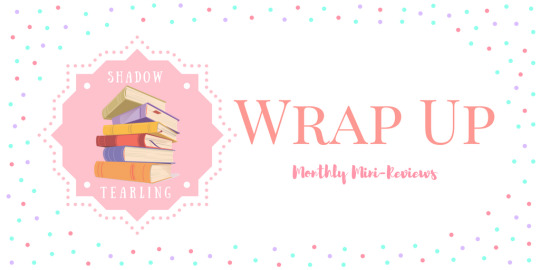

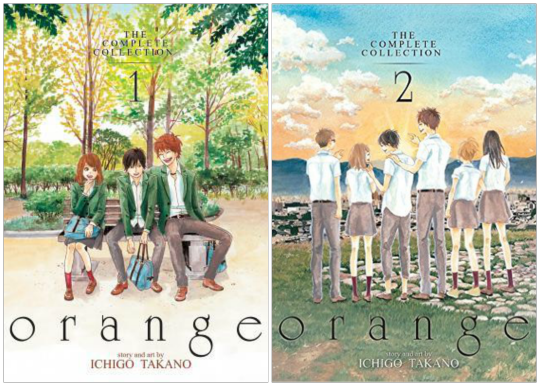
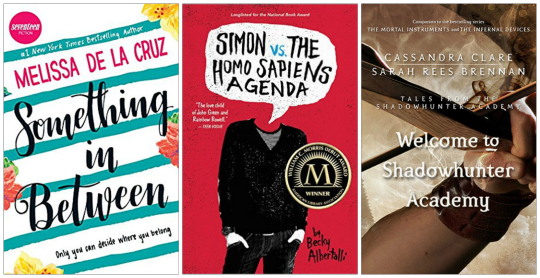
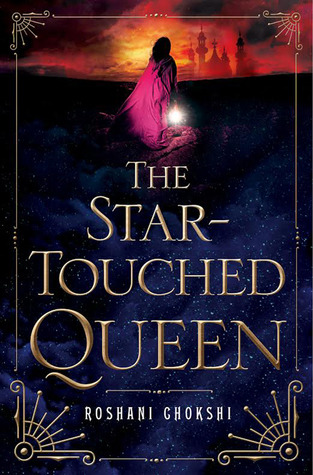



January is over! I’m both glad and surprised it came and went so quickly. I feel proud of myself for reading as much as I did this month!!!! I think the new year is always a good motivator to read read read. I love it. I’m doing a better job so far this year of reading whenever I can and taking advantage of my spare time in between and before classes. PLUS the long commute helps. Last year, I constantly found reason to NOT read, and this year, it’s like I can’t get enough! I also apparently can’t get enough of the exclamation point. Is it too much? Also! Do you all like this new banner? Any font suggestions? I’m clearly terrible at picking fonts; too indecisive. :( Anyway! On to the books!!!
Rating system: 2017 is the year of reading critically if I want to add diversity to my list of priorities for the kind books to be reading. This means also being a little more stingy with my ratings. (I don’t feel bad about this actually. I found I feel guiltier giving out five stars willy nilly, so this is an improvement!). This rating system is still arbitrary, so three star ratings don’t always have the same weight to them. As always, I rate based on my own thoughts and feelings, and as always, these are my opinions (unless I’m speaking about my marginalization(s). Don’t argue lmao).
Rating Scale:
🌟 - 1 whole star
⭐️ - ½ star
Nichijou: My ordinary life (Vol. 1 & 2) by Keiichi Arawi - 🌟 🌟 🌟 = 3/5 (for both)
This is a manga series about high school everyday life, but with a twist! (she said with sarcasm) There are a bunch of girls in high school and one of them happens to be a robot who just wants to fit in and be human (and her child scientist companion). One of the girls also happens to love making puns, one of them is the typical deadpan-type of characters, and the others are the normal ones. Some jokes were funny, most of them were not. I love puns, but this just had really terrible ones. The characters were supremely uninteresting, and I really don’t care about any of them. That said, while I was reading this, I guess I was entertained for the time being. This helps pass time quickly, but not the greatest manga I’ve ever encountered.
Sweetness and Lightning (Vol. 1) by Gido Amagakure - 🌟 🌟 🌟 = 3/5
What’s better than food-related manga? Nothing! Except, I can find better food-related manga out there than this lmao. This was fun to read, but I found all of the characters were bland. I couldn’t find myself too invested in their stories. I also feel like this is going in the direction of student-teacher relationship (younger me would have loved that, but me now is absolutely creeped out by the idea of it). The child is adorable, though. I also do really love the positive relationship between the child and the dad, so that’s one redeeming quality. I don’t think I’ll continue with this series, though, unless I find copies of this for cheaps.
Orange (Omnibus Vol. 1 & 2) by Ichigo Takano - 🌟 🌟 🌟 🌟 🌟 = 5/5 (for both)
Out of all 12 books I’ve read this month, these are the only two five-star reads! I’m stingy lmao. Anyway, this was soooooooo good! Basically, this series is about this girl, Naho, who on the first day of her junior year (I THINK... don’t hold me to this), she receives a letter from future her telling her what will happen on those days and what she needs to do versus what she should avoid doing. She dismisses that letter until the contents come true! So this series then entails what happens with those letters and Naho & her friends. I cried so many tears and felt so many feelings. I related so hard to Kakeru even though our struggles were not the same. I also really loved the ending (even though I know a lot of people didn’t like how open-ended it was). I appreciated that aspect of the story because it feels true to the kind of tale it’s telling. It perfectly depicts how friends first react versus how they should react to other friends’ struggles. I really love the dynamics between every person, and I can only wish this series was longer to explore the different friendships we were introduced to. I HIGHLY recommend this series. Please go read it! (And then tell me so we can binge-watch the anime together!)
Something in Between by Melissa de la Cruz - 🌟 🌟 🌟 ⭐️ = 3.5/5
A story with a Filipina lead?! Sign me up! This tells the story of Jasmine who is the perfect student and is set to kick ass in college until she learns that her and her entire family have been illegal immigrants the entire time, and this super awesome scholarship she was supposed to get can no longer help her. I really loved getting to see my own culture reflected in this story (this is an #ownvoices ;) so go check it out). I didn’t appreciate the little jabs at other cultures though I do understand where it comes from. I also think there was so much happening? I feel like Jasmine and her fam were trying to tackle so much all at once (it’s realistic bc what POC doesn’t go thru so much in so little time), but also it made for a messy story. OH! I hated the writing lmao. It was tacky and not my style. I also think I’m just hella tired of YA contemporaries, but as of right now, they’re the biggest source for diversity in any YA category. Fantasy is still far too white lol. I still would recommend this because it is an important story that helps humanize immigrants, but beware lmao.
Simon vs the Homo Sapiens Agenda by Becky Albertalli- 🌟 🌟 🌟 = 3/5
I really enjoyed this story, but I was expecting so much more than what I was given. I hear everyone always raving about how fantastic this book was, but I think this was way too overhyped for me, which is why I didn’t like it as much as everyone else. I feel like the tension between friends was either unnecessary or done poorly (I’m talking about Leah here). HOWEVER, I still do like it. Simon was a fun character, and Blue was also really interesting. I also really love the discussion around consent and identity, and I think it was done well.
Welcome to the Shadowhunter Academy (#1) by Cassandra Clare - 🌟 🌟 🌟 = 3/5
Simon felt reaaaaaally out of character in this novella. Maybe that’s bc of what happened at the end of TMI and that’s a valid excuse, but it makes me uncomfortable. Simon was one of the better characters in that series, and I really feel like he got butchered here. With that said, however, I do think that this novella shows improvement in CC’s writing because I still surprisingly enjoyed it. I just don’t think I’ll continue on with CC’s works? I think this is me breaking up with the Shadowhunter chronicles. She’s also highly problematic, so there’s that.
The Star Touched Queen by Roshani Chokshi - 🌟 🌟 🌟 🌟 🌟 = 4/5
LOVE This! An #Ownvoices fantasy about Mayavati whose horoscope entails a marriage with death and destruction. I buddy read this one with one of my really close friends (she doesn’t read too often), and we both really enjoyed it. Maya is this really dynamic character that, as the story progresses, really matures in a realistic way. The writing was phenomenal but I do think it was a bit out of place? Idk I always have problems whenever the writing is sophisticated but then it’s first person POV. Like.... I’m pretty positive that my brain cannot conceive even half of those words to describe what’s happening around me. I’d see a tree and I’d describe it as “green and really tall...” So there’s that. I also think that the writing kind of made it difficult to fall in love with the couple. I didn’t totally buy the romance, despite me loving both characters individually. I love the incorporation of different aspects of Indian culture as part of the fantasy elements of the world. I would love more from this story, but as it stands, this is where Maya’s story ends (the next book is actually a companion........). I highly recommend it! (Even though it sounds like I didn’t like it lmao I promise I did).
Three Dark Crowns by Kendare Blake - 🌟 🌟 🌟 🌟 🌟 = 4/5
I absolutely loved this. First of all, I appreciate that I can tell each sister apart from one another because they have such distinct personalities (Arisonoe is my fave as it turns out even if she has a dumb ass name). It’s a super slow book that basically builds up to the fight to the death (it doesn’t actually happen in this book). I knew that going in which is why I wasn’t salty when it didn’t happen. Basically, we get introduced to the sisters in this book, find out that there are some hella issues going on with their missing powers, and it gave us time to get used to the world all while introducing us to the characters. My number one biggest giant complaint is that I realllllly fucking hate Joseph. He’s an asshat and I hope he dies in book two. Katharine please kill him. There was an unnecessary love triangle lmao like fuck off with that shit maybe. I also hated Pietyr. So basically, the dudes are assholes and the girls are fantastic. Maybe that was the point? This is a matriarchal society so I guess it worked. Highly recommend if you really like politically-driven books and a large cast of characters.
Every Heart a Doorway by Seannan McGuire - 🌟 🌟 🌟 ⭐️ = 3.5/5
The writing is quite calming. Also confusing. This is another one of those far too hyped for me to love in the same way everyone else does. i appreciate the amazing concept and the wonderful conversations taking place in this book about identity, sexuality, gender, and mental illness. However, it was too short for me to really love any of the characters. I certainly failed to connect with the MC and didn’t feel for her anguish. It also left a bad taste in my mouth that the first person to be killed off in the murder mystery aspect happens to be POC when there were like 20 other white kids lmao........ NOT THAT I CONDONE MURDER but why we gotta kill POC for....... Idk. Proceed with caution I guess.
Moll Flanders by Daniel Defoe- 🌟 🌟 🌟 = 3/5
This was funny as hell. Basically, it’s about this lady whose name we never really know because she keeps changing it to suit her needs. She was born in a prison, so she’s set up to fail in every aspect of her life bc poor and no family. HOWEVER, this is the story of how she eventually says fuck you to everyone and succeeds anyway bc why not. I read this for class, and I highly enjoyed it. Problems: there were literally zero chapter breaks, random ass capitalization (why must 17/18th century authors do this to me), too many much cataloging of goods (though that was literally the point is to be excessive... I get it... pls stop), and the author basically just said to the plot “GOGOGOGOGOGOGOGO” without taking a break. If you like classics similar to Jane Austen (but without the romance part bc she just basically scams all her husbands lmao), I think this is a really good one to check out.
Thank you, lovely, for reading through this mess of a post. I love you and I hope you have a wonderful February reading month!
#wrap up#2017#january 2017#january#books#book#bookish#booklr#book reviews#read#reading#readingwu#readingwu 2017
4 notes
·
View notes
Text
Thumbnails Special Edition: National Disability Employment Awareness Month
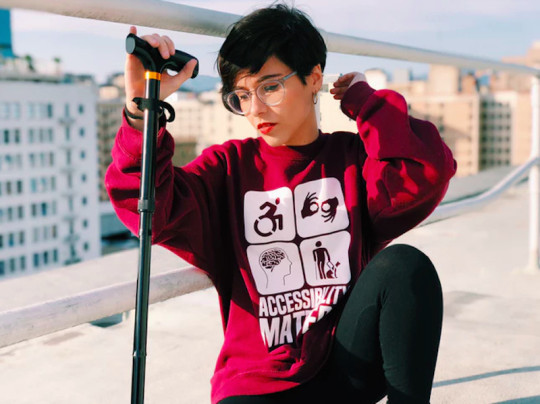
by Chaz Ebert and Matt Fagerholm
October 24, 2018 |
Print Page Tweet
Thumbnails is a roundup of brief excerpts to introduce you to articles from other websites that we found interesting and exciting. We provide links to the original sources for you to read in their entirety. This special edition of Thumbnails celebrates National Disability Employment Awareness Month, which runs through the entirety of October. Our contributor Scott Jordan Harris gave us the following article recommendations, and they provide a vital array of perspectives on the need for inclusivity in media.—Chaz Ebert
Advertisement
1.
“Growing Up, I Only Saw Half of Myself Represented On TV—That Needs to Change Now“: A personal essay from Bustle‘s Andrea Lausell about representations of Latinx people with disabilities. See also: Melissa Hung’s Huffington Post piece on “the most damaging way movies portray people with disabilities” and an article by prominent activist Vilissa Thompson on her Ramp Your Voice blog about portrayals of disability in the Black community.
“As I’ve grown into my adult years, it has made me happy to see Latinx-centered media begin to share stories of other marginalized non-disabled groups in the Latinx community (LGBTQ+, Afro-Latinx, Indigenous-Latinx). Representation is slowly improving with how these identities are viewed with TV shows like ‘One Day at a Time’ having a teenager like Elena Alvarez come out as queer and work through the emotions while seeking acceptance from her Cuban family. ‘Jane the Virgin’ highlights characters of color tackling the topic of immigration, all while making a political statement about our government and its treatment of people seeking a better life. Although these strides are giving us a diverse representation of Latinx culture and are being received fairly well by the community for being marathon-worthy, if Disabled Latinx were to be included in the narrative, would the public receive it as well? I’ve noticed that non-Latinx communities are just starting to embrace disabled narratives on their TV screens. Often, disabled representation in Hollywood, like in the novel-turned-film ‘Me Before You’ starring Emilia Clarke and Sam Claflin, portrays the harmful stereotype of disability being a burden. However, shows like ABC’s sitcom ‘Speechless’ have been a game changers for showing a disabled lead character happy with their life. But that’s just starting to happen now. Growing up, I learned to be ashamed of who I am because there were so few positive disabled Latinx representations on TV. Hearing from my Latinx community that disabled Latinx don’t exist — or that there’s ‘no need’ for us to be shown — told me that my place as a Disabled Latina within Latinidad wasn’t welcomed.”
2.
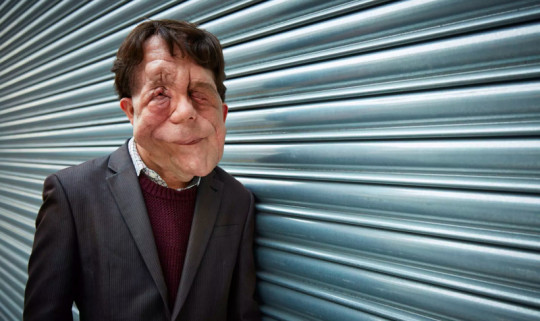
“Why are disabled actors ignored when it comes to roles like the Elephant Man?“: Asks The Guardian‘s Frances Ryan. See also: Ryan’s piece on the controversy regarding Netflix’s “Afflicted” series and Julie Rehmeyer’s Los Angeles Times essay on how Netflix is “televising prejudice against the chronically ill.”
“The BBC has been widely criticised over its decision to cast a non-disabled person in its remake of ‘The Elephant Man.’ The role of Joseph Merrick – who had severe physical deformities – will be played by the Stranger Things actor Charlie Heaton. Notably, actor Adam Pearson – who has neurofibromatosis type 1, a condition which was once thought to affect Merrick – has said he wasn’t even given the opportunity to audition. As Pearson told LBC, it’s part of a culture of exclusion for disabled actors. ‘It’s a systemic problem, not only in the BBC but industry-wide.’ From Dustin Hoffman in Rain Man to Eddie Redmayne in ‘The Theory of Everything,’ it’s routine for non-disabled actors to play disabled characters, often gaining critical acclaim in the process. At best, it takes work and exposure from talented disabled actors and further adds to an arts and culture that pushes disability representation – much like race, sex and class – to the sidelines. At worst, it sees non-disabled actors mimic the characteristics of a minority group without any involvement from the community it depicts.”
3.

“‘A Quiet Place’ proves there’s no excuse for using non-disabled actors to play disabled characters“: According to The Independent‘s James Moore. See also: Variety‘s Joe Otterson reports that Maysoon Zayid, who has cerebral palsy, will write and star in “an autobiographical comedy series in development at ABC,” while CNN‘s Wayne Drash analyzes the outrage over the portrayal of epilepsy on Netflix’s “Seizure Boy.”
“The movie is set in a post-apocalyptic world haunted by blind monsters that zero in on sound with the aid of supersensitive hearing. Silence is thus a matter of survival. Because her family uses American Sign Language (ASL) they have an advantage: they can talk to each other in a world where speaking can get you killed. The script could have fallen down at this point by having Simmonds perform a functional role without much else to do other than move the plot along for the other actors, including A-lister Emily Blunt, to shine. But it has more ambition than that. Simmonds’ Regan Abbott is a fully formed character; a stroppy teen, chafing against her parents’ overprotectiveness and haunted by what she sees as her role in her little brother’s death. It’s not just her deafness that is central to the plot: she is. She’s neither an afterthought, nor is she an inspiration, which is another trap films involving disability fall into. She’s a person. She’s also the best thing about a film that is full of good things. Director John Krasinski, who pushed to cast her, has further revealed that she changed one of the signed parts of the scripts in an important way that makes it better. In fact she elevates the whole project. As Kamran Mallick, the chief executive of Disability Rights UK, says, she brings ‘an extra dimension to the role which a hearing actor would not have been able to do.’”
Advertisement
4.

“Toppling Structures of Inequality in the Documentary Field“: A great article published at IDA by Nicole Opper.
“New Day Films, a distribution co-op created by and for independent documentary filmmakers in 1971, has recently been grappling with what it means to be truly representative of the broad spectrum of filmmakers that exists, including filmmakers of color, working-class filmmakers, trans and gender non-binary filmmakers and those with disabilities—groups that have historically been underrepresented or poorly portrayed in the industry. At our Annual Meeting in upstate New York this past June, a panel was convened to discuss the findings of an Equity and Representation task force, and to open up the conversation to all member-owners of the co-op. ‘Very often in the documentary space, I’m the only person of color,’ remarked Michael Premo. Premo is the director of ‘Water Warriors,’ the story of a community’s successful fight to protect their water from the oil and natural gas industry. ‘This is also sort of dually equated with poverty, which is equally as racist as being the token black guy.’ Cheryl Green, the director of ‘Who Am I To Stop It’—a documentary about individuals with traumatic brain injuries—shared her perspective as a filmmaker with acquired disabilities herself: ‘There is no one disability community. What is a film about disability? What is a person with a disability? We’re not a monolith. There’s not one way to talk about it; there’s not one way to present it. The main way disability is represented is non-disabled people parachuting in and filming a medical story. Usually it’s one that starts off as ‘That’s gross or scary or painful! Phew! They got better.’”
5.
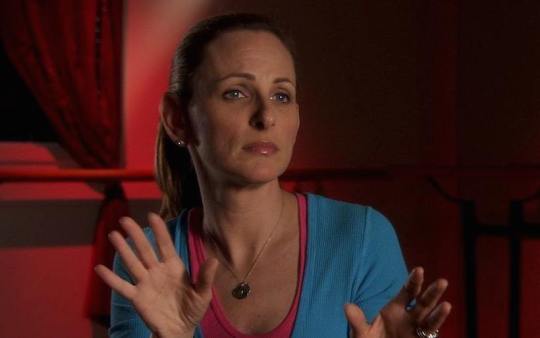
“CinemAbility: The Art of Inclusion“: Scott Jordan Harris recommends Jenni Gold’s documentary in his RogerEbert.com review.
“‘CinemAbility’ is the most entertaining and comprehensive history of disability in American film and television ever made. In that sense it is the onscreen equivalent of Matthew F. Norden’s classic book Cinema Of Isolation: A History Of Physical Disability In The Movies, and Norden is prominent in the film’s opening scenes, explaining the early and generally disheartening history of Hollywood’s ideas about disability. Due prominence is given to Lon Chaney, an able-bodied actor notorious in the disabled community for making a career out of grotesque and exploitative parodies of disability. He often did so in partnership with director Tod Browning, who in 1932 made ‘Freaks’ with a cast of disabled actors. Norden uses ‘Freaks’ to make an important point about audience attitudes to disability then that is still relevant now: ‘Audiences couldn’t handle [‘Freaks’]. People supposedly went screaming down the aisles because what they were seeing on the screen were not able-bodied actors wearing tricky makeup … They were seeing authentic disabled people.’ But ‘CinemaAbility’ never feels like a lecture. It is structured like a conversation, with contributions from an array of industry heavyweights, including Marlee Matlin, Ben Affleck, Geena Davis, William H. Macy, Ben Lewin, Peter Bogdanovich and R.J. Mitte.”
Image of the Day

TV Guide‘s Alyssa Andrews explains “how TV is still failing people with disabilities,” in graphic novel form.
Video of the Day
[embedded content]
The official trailer for Jenni Gold’s documentary, “CinemAbility: The Art of Inclusion,” reviewed above by Scott Jordan Harris.
Previous Article: Thumbnails 9/28/18
Please enable JavaScript to view the comments powered by Disqus.
comments powered by
Source: https://bloghyped.com/thumbnails-special-edition-national-disability-employment-awareness-month/
0 notes
Text
Thumbnails Special Edition: National Disability Employment Awareness Month
Thumbnails is a roundup of brief excerpts to introduce you to articles from other websites that we found interesting and exciting. We provide links to the original sources for you to read in their entirety. This special edition of Thumbnails celebrates National Disability Employment Awareness Month, which runs through the entirety of October. Our contributor Scott Jordan Harris gave us the following article recommendations, and they provide a vital array of perspectives on the need for inclusivity in media.—Chaz Ebert
1.
"Growing Up, I Only Saw Half of Myself Represented On TV—That Needs to Change Now": A personal essay from Bustle's Andrea Lausell about representations of Latinx people with disabilities. See also: Melissa Hung's Huffington Post piece on "the most damaging way movies portray people with disabilities" and an article by prominent activist Vilissa Thompson on her Ramp Your Voice blog about portrayals of disability in the Black community.
“As I’ve grown into my adult years, it has made me happy to see Latinx-centered media begin to share stories of other marginalized non-disabled groups in the Latinx community (LGBTQ+, Afro-Latinx, Indigenous-Latinx). Representation is slowly improving with how these identities are viewed with TV shows like ‘One Day at a Time’ having a teenager like Elena Alvarez come out as queer and work through the emotions while seeking acceptance from her Cuban family. ‘Jane the Virgin’ highlights characters of color tackling the topic of immigration, all while making a political statement about our government and its treatment of people seeking a better life. Although these strides are giving us a diverse representation of Latinx culture and are being received fairly well by the community for being marathon-worthy, if Disabled Latinx were to be included in the narrative, would the public receive it as well? I’ve noticed that non-Latinx communities are just starting to embrace disabled narratives on their TV screens. Often, disabled representation in Hollywood, like in the novel-turned-film ‘Me Before You’ starring Emilia Clarke and Sam Claflin, portrays the harmful stereotype of disability being a burden. However, shows like ABC’s sitcom ‘Speechless’ have been a game changers for showing a disabled lead character happy with their life. But that’s just starting to happen now. Growing up, I learned to be ashamed of who I am because there were so few positive disabled Latinx representations on TV. Hearing from my Latinx community that disabled Latinx don’t exist — or that there’s ‘no need’ for us to be shown — told me that my place as a Disabled Latina within Latinidad wasn’t welcomed.”
2.
"Why are disabled actors ignored when it comes to roles like the Elephant Man?": Asks The Guardian's Frances Ryan. See also: Ryan's piece on the controversy regarding Netflix's "Afflicted" series and Julie Rehmeyer's Los Angeles Times essay on how Netflix is "televising prejudice against the chronically ill."
“The BBC has been widely criticised over its decision to cast a non-disabled person in its remake of ‘The Elephant Man.’ The role of Joseph Merrick – who had severe physical deformities – will be played by the Stranger Things actor Charlie Heaton. Notably, actor Adam Pearson – who has neurofibromatosis type 1, a condition which was once thought to affect Merrick – has said he wasn’t even given the opportunity to audition. As Pearson told LBC, it’s part of a culture of exclusion for disabled actors. ‘It’s a systemic problem, not only in the BBC but industry-wide.’ From Dustin Hoffman in Rain Man to Eddie Redmayne in ‘The Theory of Everything,’ it’s routine for non-disabled actors to play disabled characters, often gaining critical acclaim in the process. At best, it takes work and exposure from talented disabled actors and further adds to an arts and culture that pushes disability representation – much like race, sex and class – to the sidelines. At worst, it sees non-disabled actors mimic the characteristics of a minority group without any involvement from the community it depicts.”
3.
"'A Quiet Place' proves there's no excuse for using non-disabled actors to play disabled characters": According to The Independent's James Moore. See also: Variety's Joe Otterson reports that Maysoon Zayid, who has cerebral palsy, will write and star in "an autobiographical comedy series in development at ABC," while CNN's Wayne Drash analyzes the outrage over the portrayal of epilepsy on Netflix's "Seizure Boy."
“The movie is set in a post-apocalyptic world haunted by blind monsters that zero in on sound with the aid of supersensitive hearing. Silence is thus a matter of survival. Because her family uses American Sign Language (ASL) they have an advantage: they can talk to each other in a world where speaking can get you killed. The script could have fallen down at this point by having Simmonds perform a functional role without much else to do other than move the plot along for the other actors, including A-lister Emily Blunt, to shine. But it has more ambition than that. Simmonds’ Regan Abbott is a fully formed character; a stroppy teen, chafing against her parents’ overprotectiveness and haunted by what she sees as her role in her little brother’s death. It’s not just her deafness that is central to the plot: she is. She’s neither an afterthought, nor is she an inspiration, which is another trap films involving disability fall into. She’s a person. She’s also the best thing about a film that is full of good things. Director John Krasinski, who pushed to cast her, has further revealed that she changed one of the signed parts of the scripts in an important way that makes it better. In fact she elevates the whole project. As Kamran Mallick, the chief executive of Disability Rights UK, says, she brings ‘an extra dimension to the role which a hearing actor would not have been able to do.’”
4.
"Toppling Structures of Inequality in the Documentary Field": A great article published at IDA by Nicole Opper.
“New Day Films, a distribution co-op created by and for independent documentary filmmakers in 1971, has recently been grappling with what it means to be truly representative of the broad spectrum of filmmakers that exists, including filmmakers of color, working-class filmmakers, trans and gender non-binary filmmakers and those with disabilities—groups that have historically been underrepresented or poorly portrayed in the industry. At our Annual Meeting in upstate New York this past June, a panel was convened to discuss the findings of an Equity and Representation task force, and to open up the conversation to all member-owners of the co-op. ‘Very often in the documentary space, I'm the only person of color,’ remarked Michael Premo. Premo is the director of ‘Water Warriors,’ the story of a community's successful fight to protect their water from the oil and natural gas industry. ‘This is also sort of dually equated with poverty, which is equally as racist as being the token black guy.’ Cheryl Green, the director of ‘Who Am I To Stop It’—a documentary about individuals with traumatic brain injuries—shared her perspective as a filmmaker with acquired disabilities herself: ‘There is no one disability community. What is a film about disability? What is a person with a disability? We're not a monolith. There's not one way to talk about it; there's not one way to present it. The main way disability is represented is non-disabled people parachuting in and filming a medical story. Usually it’s one that starts off as ‘That's gross or scary or painful! Phew! They got better.’”
5.
"CinemAbility: The Art of Inclusion": Scott Jordan Harris recommends Jenni Gold's documentary in his RogerEbert.com review.
“‘CinemAbility’ is the most entertaining and comprehensive history of disability in American film and television ever made. In that sense it is the onscreen equivalent of Matthew F. Norden's classic book Cinema Of Isolation: A History Of Physical Disability In The Movies, and Norden is prominent in the film's opening scenes, explaining the early and generally disheartening history of Hollywood's ideas about disability. Due prominence is given to Lon Chaney, an able-bodied actor notorious in the disabled community for making a career out of grotesque and exploitative parodies of disability. He often did so in partnership with director Tod Browning, who in 1932 made ‘Freaks’ with a cast of disabled actors. Norden uses ‘Freaks’ to make an important point about audience attitudes to disability then that is still relevant now: ‘Audiences couldn't handle [‘Freaks’]. People supposedly went screaming down the aisles because what they were seeing on the screen were not able-bodied actors wearing tricky makeup ... They were seeing authentic disabled people.’ But ‘CinemaAbility’ never feels like a lecture. It is structured like a conversation, with contributions from an array of industry heavyweights, including Marlee Matlin, Ben Affleck, Geena Davis, William H. Macy, Ben Lewin, Peter Bogdanovich and R.J. Mitte.”
Image of the Day
TV Guide's Alyssa Andrews explains "how TV is still failing people with disabilities," in graphic novel form.
Video of the Day
youtube
The official trailer for Jenni Gold's documentary, "CinemAbility: The Art of Inclusion," reviewed above by Scott Jordan Harris.
from All Content https://ift.tt/2OOlC4P
0 notes